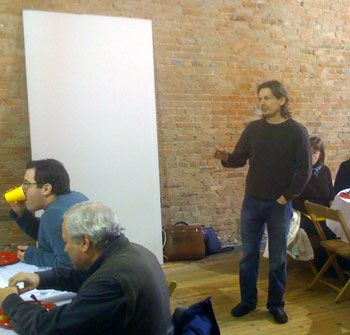Column: Meaningful Space in Ann Arbor
Earlier this month (March 8), the Toledo Museum of Art hosted a program featuring Jay Shafer, the founder of Tumbleweed Tiny House Company and one of the proponents for the tiny homes movement. “Tiny” in this case means only a few hundred square feet, and most of the Tumbleweed designs are under 200 square feet. A newly constructed, 65-square-foot Tumbleweed house, mounted on a trailer and parked on the front steps of the Museum, is among the works presented in the Museum’s “Small Worlds” exhibition.
I attended this program, in part, at the invitation of a friend who lives in Toledo – because I am an architect, and I am working on the design of a small bunkhouse for their summer cottage in Ontario.
Architecture is about creating meaningful spaces and about communicating that meaning to the occupants and users of those spaces. For me, the Small Worlds exhibition triggered a series of thoughts about elements of physical culture in Ann Arbor and whether that culture is successfully serving its purpose in the city.
I’m going to wrap a lot into this notion of physical culture – from pedestrian amenities, to accessory dwelling units, to a phone booth. The phone booth is something I’m planning to add to the physical culture of my own workspace – at Workantile on Main Street in Ann Arbor. So that’s where I’ll start, with something tinier even than Jay Shafer’s 65-square-foot house. [Full Story]





